|
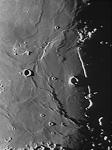 Crumpled Sheets of Lava
Crumpled Sheets of Lava
7.02.2004 | Lunnoe foto dnya
Crumpled sheets on a bed result from movement of a thin surface layer (the sheet) due to underlying motion (the restless sleeper). KC Pau's low sun view of eastern Mare Nubium looks like a messy lava sheet where most of the movement may have been vertical.
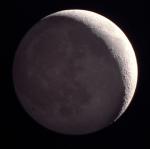 New and Old All Together
New and Old All Together
6.02.2004 | Lunnoe foto dnya
The crescent Moon is one of the glories of the solar system. The bright, sun-lit portion of the Moon doesn't yet overwhelm the Earth-lit, gibbous part. In Alan Friedman's remarkable composite rendition of this classic scene there is a strong three-dimensionality - you can almost feel the curvature of the surface.
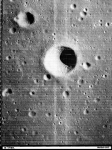 LO III
LO III
5.02.2004 | Lunnoe foto dnya
The trouble with NASA and space exploration is that its lingua franca is jargon and acronyms. "LO III" means nothing to hardly anyone except the spaceniks who remember or read of the remarkable robotic successes that preceded Apollo landings.
 Copernicus!
Copernicus!
4.02.2004 | Lunnoe foto dnya
Copernicus is the most important crater on the Moon. How can I call out any one as "most important," you ask? Let me modify the first sentence and you will probably agree: Copernicus is the most important crater on the Moon because of what it has taught us. Here are three lessons.
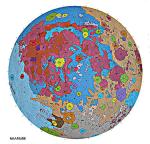 Lunar Bible
Lunar Bible
3.02.2004 | Lunnoe foto dnya
Although my collection of lunar books and maps currently includes 211 items, there are only three that I use constantly: Antonin Rukl's Lunar Atlas, Ralph Baldwin's The Face of the Moon and Don Wilhelms' Geologic History of the Moon.
 Brightness at Noon
Brightness at Noon
2.02.2004 | Lunnoe foto dnya
The brightness of local noon robs the familiar Moon of shadows. Instead of craters and hills we are left with reflectivity or albedo. The full Moon is strange, another world worthy of our exploration. Do you recognize this landscape?
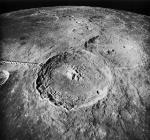 Theophilus
Theophilus
1.02.2004 | Lunnoe foto dnya
If Copernicus is the king of lunar craters, Theophilus is at least a duke, if not a prince. Theophilus is a 100 km wide, 4.4 km deep complex impact crater. This oblique Apollo 16 view clearly shows the trademark features of a complex crater: terraced walls, flat floor, and massive central peaks.
 Hooke & Hipparchus
Hooke & Hipparchus
31.01.2004 | Lunnoe foto dnya
The earliest drawings of the Moon were of the entire body. By 1665 Robert Hooke, the English rival of Isaac Newton, published (in his Micrographia) the first drawing of a single feature, and it was remarkably accurate.
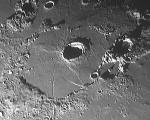 Lake of Death
Lake of Death
30.01.2004 | Lunnoe foto dnya
Do you consider Lacus Mortis - The Lake of Death - a crater? Because of the mare-like term "lacus" some observers just see it as a patch of mare material linking Mare Frigoris and Lacus Somniorum.
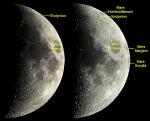 Nodding Moon
Nodding Moon
29.01.2004 | Lunnoe foto dnya
We glance up and notice the Moon, seeing that its phase and place in the sky are different from yesterday, and we congratulate ourself for our visual astuteness and for being in tune with the cosmos. But is that the only way the Moon changes?

